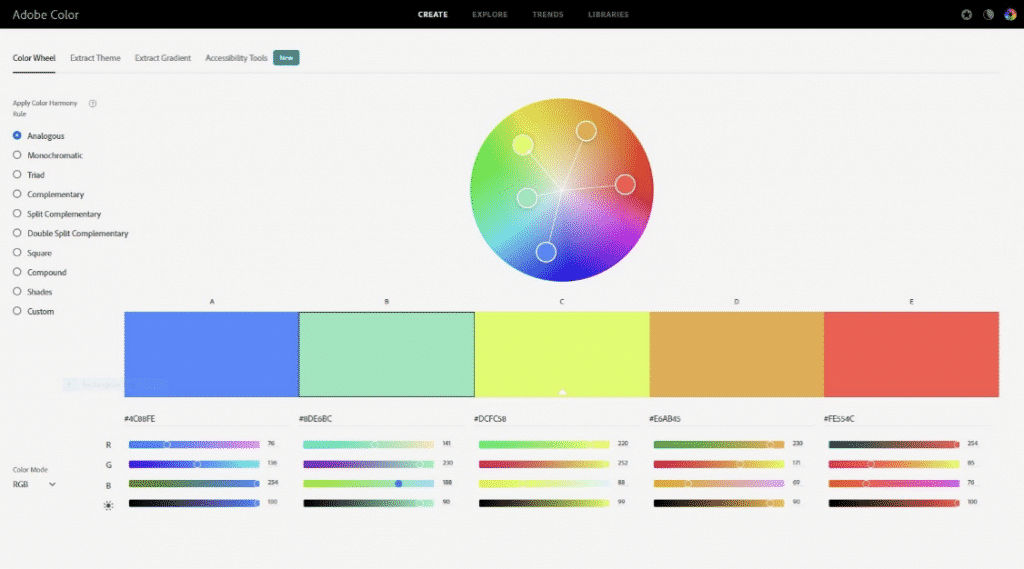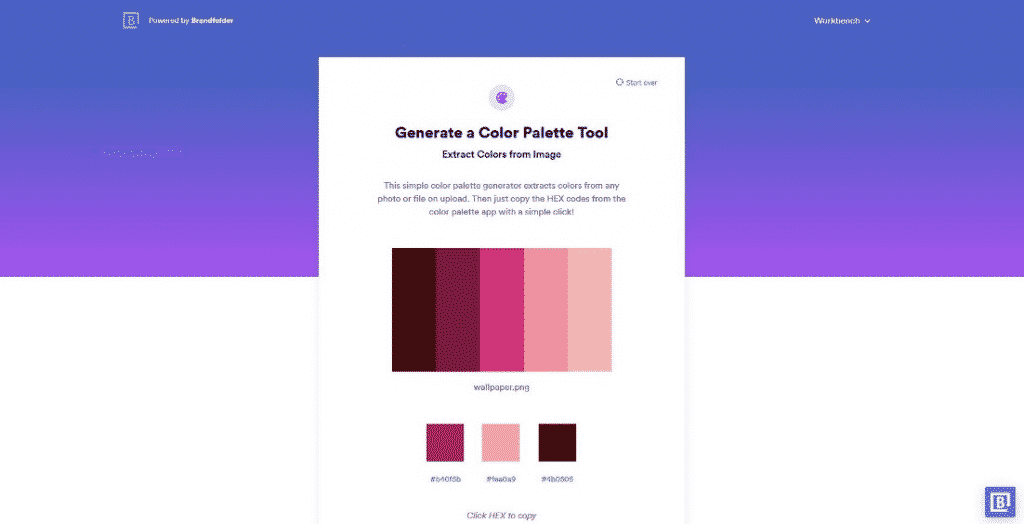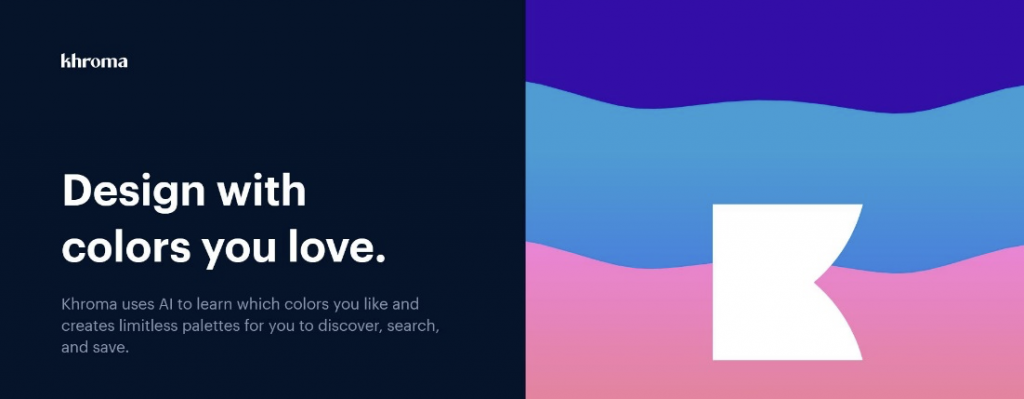
Introduction
Colors are the most visually appealing factor that governs much of our choices of products. While colors are pretty much everywhere around us, it also forms an integral part of the digital space, namely logos and websites. As a designer, you must choose and combine the colors that resonate with the client’s products and services while maintaining its appeal. The color selection phase is one of the daunting tasks you need to perform as a designer.
In the day and age of the technological era, the possibilities of choosing the color schemes are endless- Thanks to the color palette tools. Although you will still need to apply your logic and gut feeling to select the best color combinations that work best for your project, color palette tools can help to speed up the designing process with a wide range of color schemes to choose from. The designers must be aware of the color theory to navigate through the color palette tools efficiently. As a designer, your challenge is to select colors based on personal preference because colors have a more substantial impact on people. While some colors influence emotions, moods, thoughts, others prefer colors and tell a story about the product, a company, or an individual.
To get insights into the inspiring list of color palette tools, read the article below.
The Ultimate List of Color Palette Tools for Web and UI Designers
Still, wondering how colors and emotions are interlinked? Let’s deep dive further.
Depicting Color and Emotions
The fundamentals of color theory require designers to understand the color wheel thoroughly. Perhaps, we are introduced to the color wheel in one of those art classes back in the schooling days. Typically, the color wheel consists of red, yellow, and blue as the base colors and orange, green, and violet as the secondary colors. The range of tertiary colors is merely various combinations such as red-orange, yellow-green, blue-violet, and yellow-orange.


The color wheel provides the color-relations, and each combination invokes an emotion. Colors are not merely a tool for visual appeal, but it creates a long-lasting identity for brands. Several multinationals opt for color psychology in their branding. The suitable color combinations offer them to instill in their consumers what they are trying to sell or offer with their product or service. Once you can understand the color psychology behind the designs, you will be better positioned to work your way around with your projects to select that highlight the company ethos of your clients.
Color Palette Tools
Now that you know some of the major brands and how color combinations have presented a meaning behind their branding, it is time to explore the color palette tools. Often, designers’ challenges include adjusting the contrast, saturation, brightness, or hue, which is a time-consuming process. Color palette tools lighten the workload as it helps to identify the color that blends well or complement each other while keeping the brand vision in mind. The designers can manually design a palette that can be used for various designing purposes such as logo creation, website and app design, and infographics. There are main types of color palettes.
Complementary palettes consist of colors that belong to the opposite sides in a color wheel.
Monochromatic palettes are formed by the inclusion of different shades of the same color. It is one of the most popular approaches in designing and used by top brands.
Triadic palettes comprise three primary colors. Such color shades are suitable for creating a design with visible contrast elements in its design.
Analogous palettes are made of color that exists near to each other on the color wheel.
Here is a look at some of the top color palette tools widely used by designers in the industry today.
Adobe Color CC

The Adobe Color palette tool allows users to generate color palettes to save them into the creative cloud. The saved color themes can be used with any Adobe product for designing. It is a handy color palette generator that allows a user to select the color schemes using the color wheel. Additionally, there are thousands of options for selecting color combinations. A color mode lets the user select from RGB, CMYK, HSB, and LAB options. You can also find various color harmony rules that are:
- Analogous
- Monochromatic
- Triad
- Complementary
- Split Complementary
- Double Split Complementary
- Square
- Compound
- Shades
- Custom
Canva Color Palette Generator

The color palette generator by Canva enables a user to extract the color combinations from images that you have uploaded. It is useful for situations when the images and the required infographics are decided, and the color combination needs to be decided based on the images to match the overall design of the website or app. Also, the hues are generated automatically upon uploading the image that makes designing easier instead of manually matching the hues and contrast as it is time-consuming.
Workbench Color Palette Tool by Brandfolder

This simple color palette generator extracts colors from any image that you upload. The tool generates the HEX codes from the images, making your tasks much faster as the color codes are the most important factor while working with a particular color shade.
Coolors

Coolors is another popular color palette generator. You have the option to pick any color and have your color schemes for a product design. Additional options include exporting, storing, and reusability of the palettes in programs like Adobe. Coolors also provide a mobile app; therefore, you can modify your color requirements virtually from anywhere.
Khroma

Khroma is powered by AI capabilities to learn a color as per your liking and creating palettes accordingly. You have a wide range of colors to select, and Khroma provides excellent combinations of color schemes. Besides, you can view it as typography, gradient, palette, or as custom images. An additional option lets you view other user’s palettes to derive inspiration for your designs.
ColorSpace

The ColorSpace is an excellent option for color palette generation along with the HEX codes. There are also unique options for gradient and 3-color gradient generation options that make it a convenient tool. Also, you can generate color combinations using the color wheel from a wide range of color shades.
Polarite

Polarite uses state-of-the-art machine learning techniques to provide an automated decision-making app to generate various color schemes. You can swipe colors as per your liking. Based on your navigation choices through the color options, the AI provides feedback on harmonious color combinations. You can also export into different formats and copy the HEX codes and CSS strings for your use. Also, you can share your designs across social media or transfer them to your computer for future use. There are no watermarks that make the color schemes usable for any of your designs. Polarite offers data privacy as there is no central server and all the data collected from your uses are stored on your device. You can clear all the data anytime you want.
Some good books that can help you to be better with colors
Color Third Edition: A workshop for artists and designers
Taking a practical approach to color, Color: A workshop for artists and designers is an invaluable resource for art students and professionals alike. With its sequence of specially designed assignments and in-depth discussions, it effectively bridges the gap between color theory and practice to inspire confidence and understanding in anyone working with color.
Secret Language of Color: Science, Nature, History, Culture, Beauty of Red, Orange, Yellow, Green, Blue, & Violet
In this beautiful and thorough investigation, The Secret Language of Color celebrates and illuminates the countless ways in which color colors our world.
Essential Tips for Color Palette Inspiration
Inspiration from Beautiful Photography
The camera lens never disappoints. It captures the essence of the beauty of nature. Therefore if you are short on inspiration, you should click some beautiful photographs or use some of the photographs from professional photographers. It is a great practice to use the photographs in a color palette tool and pick the right color combinations that you might have liked in a photograph. Also, nature photography is the most preferred source of gathering beautiful color schemes and creating a wonderful palette out of it.
Color Wheel
For every designer, understanding the color wheel and the basics of color theory is a must. For newcomers, you can always opt for experimenting with various colors using the color wheel. If you can gain mastery of exploring the color wheel, you are well-equipped for achieving remarkable color inspirations, and you will be able to generate innovative color patterns and gradients.
Look for Interior Design Color Combinations
As you are well-aware, interior design is all about fantastic color shades and combinations that transform an entire household or office space. In this respect, you can turn to interior designs for more inspiration and picking up unique color combinations for your designs.
Opt for a Limited Number of Colors
Once you are sure of what color combinations you prefer to address the branding, you must ensure that there are no more than 4 colors used to create the color mix you are opting for. A limited number of colors will let you achieve the right combinations as too many colors will result in an unpleasant outcome and color shade. The designs should be clean and not too overwhelming for users to view.
Use Color Swatches
Color swatches allow you to view a color combination before finalizing a color physically. It is useful for projects where your client may have specific color requirements and want to see a combination sample. Also, each of the swatches comes with an equivalent of HEX codes, and you can use hexadecimal colors with a color picker for a more straightforward palette design.
Select colors as per the emotion
An essential part of the color combination is finding and understanding the emotion required to be portrayed. Is it the sports industry, fashion, beauty, or business purposes? What is the mood to be reflected? Is it cheerful, serious like healthcare-related or elegant, feminine portrayal through the offering like beauty products or skincare or other moods? If you have addressed this factor, you will rightly get the combination you are looking for as color schemes vary according to the emotion you want to convey to the audience.
Conclusion
While the list of color palette tools is the most effective tool that you can find useful, it is essential to be well-aware of the basics of design and colors. The task of finalizing a color is of utmost importance, but it’s not something that you can perform from scratch for each requirement. As a designer, if you rely heavily on building from scratch, productivity will likely suffer without a desirable outcome. The color palette offers several color shades to speed up your work. However, it is advisable always to go back to the basics and use the color wheel and rely on nature to provide you real color inspirations to incorporate into your design to achieve the unique and fascinating creation of color schemes that will elevate your designs tremendously.
Articles that might interest you
Color Theory: The Primer for Designers and Illustrators
Build A Website with Zyro Website Builder – Zyro Website Builder Review
Timeless Classics to Modern Era: A look at the journey of logo evolution
A Short Guide to Dashboard UI Design







